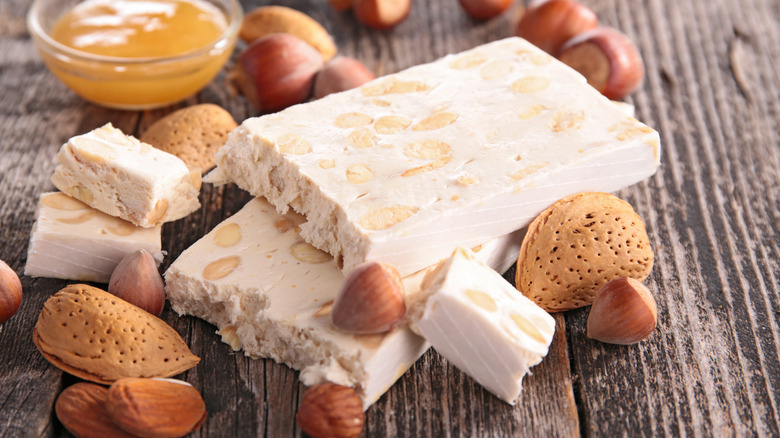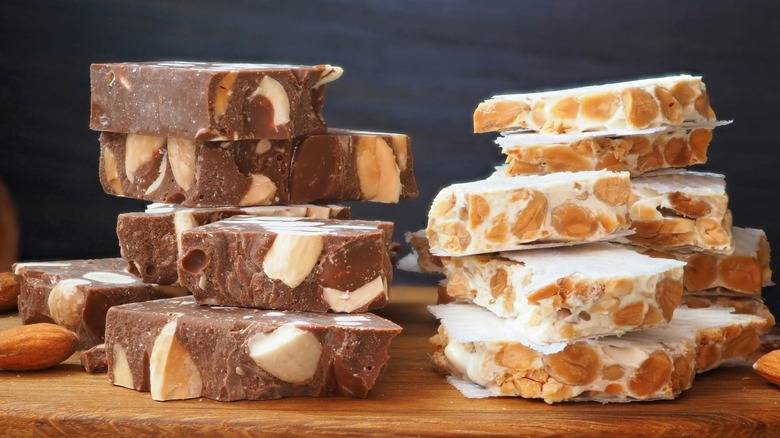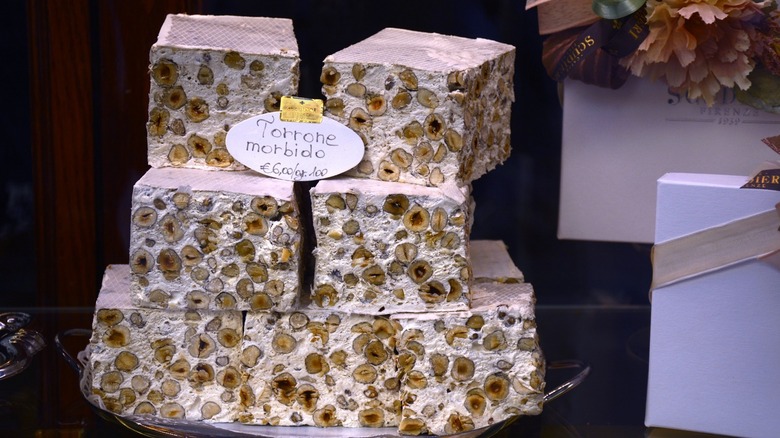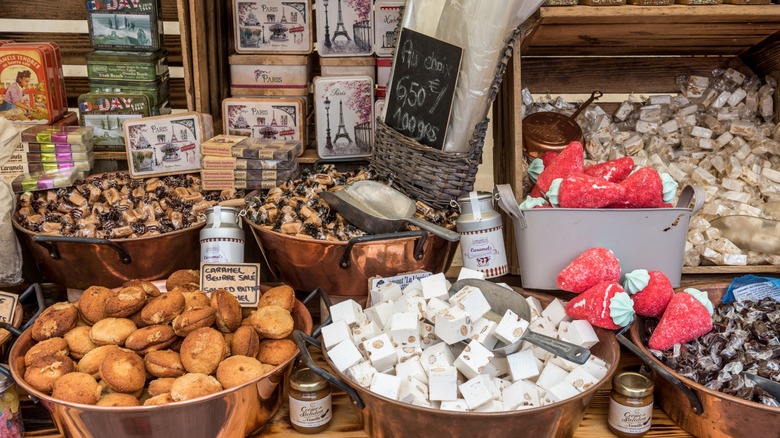What Is Nougat And Why Is It In So Much Candy?
Nougat is a classic and ubiquitous candy ingredient found in many well-known chocolate bars like Milky Way, Snickers, and Baby Ruth. Despite its widespread presence — from Halloween trick-or-treat bags in America to Christmas dinner dessert tables in Europe — nougat's actual identity and composition remain somewhat enigmatic. At its simplest, nougat is a whipped confection of sugar and egg whites, often sprinkled with roasted nuts. However, the concept of nougat is broader than this basic definition.
For instance, the sticky, syrupy white fluff in mass-produced candy bars serves more as a filling than as a standalone treat, unlike European varieties, which are eaten on their own and traditionally resemble something closer to fudge. Tracing nougat's origins adds to the complexity. Tenth-century Middle Eastern records mention something called "natif" which closely resembles modern-day nougat. Yet, European countries each have their unique take on the dessert. Even within individual countries, recipes for nougat can vary from one region or town to another. Despite this complexity, there's a method to the nutty madness.
What is nougat?
While many Europeans enjoy nougat during the Christmas holiday, most Americans know it as the filling inside Halloween candy bars, thickened and stiffened with a generous amount of corn syrup and hydrolyzed protein. The truth is that nougat comes in a variety of shades and textures.
At its core, nougat is an aerated confection made of whipped egg whites and a syrupy sweetener often accompanied by chopped roasted nuts such as pistachios, almonds, walnuts, or hazelnuts. Nougat typically appears in three main forms: white nougat (which is the most common variety), brown nougat (usually composed of caramel and nuts and lacking egg whites), and Viennese nougat, which replaces egg whites with cocoa and a mashed hazelnut base. Nougats can vary in texture, ranging from chewy and soft — you'll find this variety in some candy bars — to quite hard. Honey is often the main sweetener, resulting in a chewier, softer nougat, while sugar produces a crunchier and sturdier texture.
What does nougat taste like?
Pure nougat bars are unsurprisingly nutty and richly sweet. Some people might even find them a bit too saccharine, but the addition of more nuts and other ingredients like tart dried fruit can help offset the sweetness. Nougat often tastes similar to marshmallows, which is not surprising given that both confections rely on sugary syrup. However, while gelatin gives marshmallows their characteristic squishiness, nougat tends to be either crunchier or chewier.
In fact, consistency serves as a significant marker for differentiating regional varieties of nougat. Hard nougat is typically quite crunchy and brittle because it uses sugar as its primary sweetening agent and undergoes a lengthy cooking process, sometimes lasting up to 10 hours. On the other hand, soft nougat is chewier, less dense, and airier, thanks to a honey-based preparation and a shorter, three-hour cook time. Artisanal, handmade nougat not only offers a more complex flavor profile but is also healthier than the processed types found in mass-produced candy bars.
Where to buy nougat
Although nougat is commonly found in candy bars throughout America, more traditional forms of the confection are somewhat harder to locate. Inexpensive bags of this candy sometimes appear on mainstream supermarket shelves, but for the best varieties, a trip to a gourmet grocery store is in order. If you have access to a local Italian market, look for Torrone; these bars are usually imported and are considered the real deal. Similarly, inquire about gaz in Middle Eastern stores; if you're fortunate, you might come across some Persian nougat. Old-school candy stores specializing in candy, as well as perhaps some nuts and dried fruits, may also stock what you're seeking.
If you're up for an adventure, you can explore the regions where nougat is most renowned. Southern Italian areas like Campania and Calabria are particularly famous for their nougat, while the island of Sardinia might be considered the crown jewel for Torrone. Honey and nuts are locally produced in these regions, making the nougat among the freshest you can find. In Spain, the dessert has its origins in the Islamic-influenced south, specifically in a town called Jijona, located just north of the historic city of Alicante.




